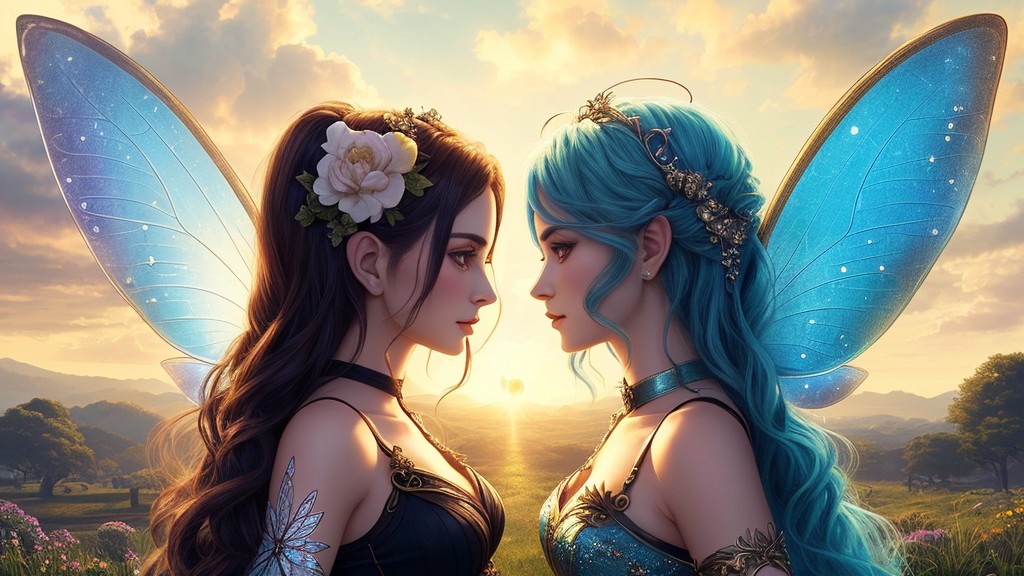
Nymphs and fairies: two enchanting beings that have captivated imaginations across cultures and centuries. Both are woven into the tapestry of folklore, mythology, and literature, yet they carry distinct characteristics and origins. Let’s delve into the realms of these mystical entities, exploring their differences and uncovering the threads that bind them.
Nymphs: Guardians of Nature

In ancient Greek folklore, nymphs were minor female nature deities, often depicted as maidens tied to specific places or landforms. These ethereal beings personified various aspects of nature and were immortal, except for the Hamadryads, whose lives were entwined with specific trees.
Nymphs were categorized into subgroups such as the Meliae (ash tree nymphs), the Dryads (oak tree nymphs), the Naiads (freshwater nymphs), the Nereids (sea nymphs), and the Oreads (mountain nymphs). Each subgroup had its domain, whether it be the tranquil waters of a spring or the majestic heights of a mountain peak.
Fairies: Enigmatic Spirits of Folklore
Fairies, on the other hand, hail from European folklore, with roots in Celtic, Slavic, Germanic, and French traditions. Described as anthropomorphic beings with magical powers, fairies are often associated with enchantment, trickery, and the metaphysical.
The folklore surrounding fairies is diverse, with beliefs ranging from them being demoted angels or deities in pagan traditions to spirits of the dead or elemental forces of nature. Fairies were sometimes depicted as benevolent creatures, bestowing blessings upon those they favored, while at other times, they were mischievous and even malevolent, leading travelers astray or causing sickness and misfortune.

Distinguishing Features
One key distinction between nymphs and fairies lies in their origins and cultural associations. Nymphs originate from ancient Greek mythology and are closely tied to the natural world, embodying specific aspects of nature such as trees, water bodies, or mountains. Fairies, on the other hand, emerge from European folklore and are often depicted as more whimsical and supernatural beings with a broader range of magical abilities.
Another difference lies in their depictions in art and literature. Nymphs are often portrayed as serene and ethereal maidens, whereas fairies are depicted in various forms, ranging from tiny winged creatures to human-like beings with magical powers.
Intersections and Shared Themes
Despite their differences, nymphs and fairies share some common themes and characteristics. Both are associated with nature and the mystical, inhabiting secluded places like forests, springs, or hidden glens. They also both have a penchant for interacting with humans, whether it be through benevolent acts or playful tricks.
Additionally, both nymphs and fairies have inspired countless works of art, literature, and mythology throughout history. From ancient Greek poetry to Victorian fairy tales, these beings have captured the imaginations of storytellers and artists across cultures and centuries.
Conclusion
Nymphs and fairies: two enchanting beings that embody the magic and mystery of the natural world. While they originate from different cultural traditions and carry distinct characteristics, they share common themes of enchantment, nature, and interaction with humans. Whether dancing in moonlit glades or frolicking in sun-dappled streams, these mystical beings continue to captivate and inspire us with their timeless allure.



